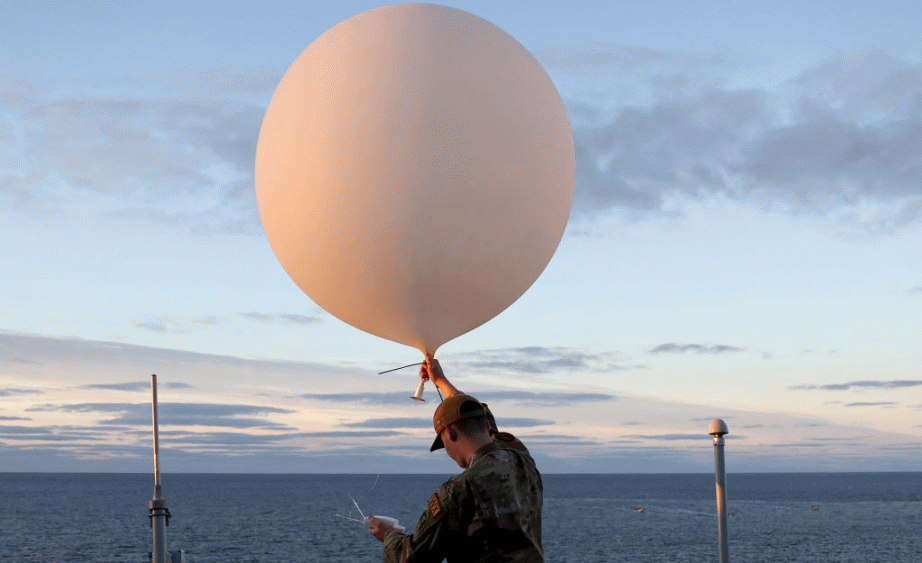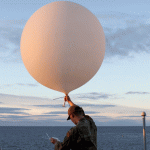Controversial geoengineering startup Make Sunsets releases balloons containing sulfur dioxide on U.S. soil after it was banned in Mexico

Late last year, we wrote about Make Sunsets, a solar geoengineering startup that’s mimicking volcanic eruption to cool Earth. In December, the controversial startup released sulfur particles into the atmosphere in an attempt to stop climate change.
The solar geoengineering startup had to cease operations in Mexico after the government cracked down on the idea of putting chemicals into the atmosphere to reflect sunlight away from the Earth.
In January of this year, the Mexican government cracked down on Make Sunsets, forcing the startup to pause operations in the country. In a statement, the government of Mexico said that “experimentation with solar geoengineering will not be allowed in Mexico,” adding that it plans to “prohibit and, where appropriate, stop experimentation practices with solar geoengineering in the country.”
Fast forward a month later, Make Sunsets has reemerged on U.S. soil to launch balloons in Nevada. This week, Make Sunsets said in a blog post that it had completed three balloon launches near Reno, Nevada. Each of the balloons contained less than 10 grams of sulfur dioxide, which is the most commonly cited aerosol particle discussed in conversations about solar geoengineering.
In a kind of apology blog post published on Wednesday, Make Sunsets acknowledged it had barged forward.
“We appreciate the Mexican government’s concern for protecting communities and the natural environment and support their call for scientific expertise and oversight of climate intervention activities. We also appreciate their concern for national and local engagement and regret that we had failed to take this into consideration sooner,” Make Sunsets said.
Founded in 2022 by CEO Luke Iseman, Make Sunsets claims that it has developed “reflective, high-altitude, biodegradable clouds that cool the planet. Mimicking natural processes, our “shiny clouds” are going to prevent catastrophic global warming.”
Make Sunsets, which is backed by two venture capital funds Boost VC and Pioneer Fund, uses geoengineering, a highly fraught way of manipulating the climate by reflecting more sunlight back into space. Make Sunset follows the same approach as Bill Gates’ controversial climate geoengineering project (SCoPEx) before it was canceled by the Swedish government.
According to its website, Make Sunsets releases a natural compound via reusable balloons to create reflective clouds in the stratosphere. “They’re *really* effective: 1 gram of our clouds offsets the warming that 1 ton of CO₂ emissions creates for a year. After three years, our clouds compost and settle back to Earth. Because we deliver our clouds via reusable balloons, we’re able to offset CO₂ at <1% of the cost of other solutions. Uniquely, we can also scale to offset *all* of global warming,” the startup said on its website.
Make Sunsets claimed it can “offset warming from all global annual CO₂ emissions with ~$30 million of our clouds, and every $1 billion of our clouds will cool the world by ~0.1°F!”
Luke Iseman told MIT Tech Review in an interview the first two balloon launches took place in April in the Mexican state of Baja California. While the scientific community is still divided regarding geoengineering, Luke Iseman thinks the startup is doing the right thing.
”It’s morally wrong, in my opinion, for us not to be doing this,” Luke Iseman said.
Make Sunsets’ idea is that sulfur particles will block out the sun and reflect it back and thus lowering temperatures on the earth. However, while spraying sulfur into the stratosphere in theory will block the sunlight and therefore cool the planet, scientists say it could also have horrific consequences by disrupting the ozone layer, potentially leading to acid rain and causing respiratory disease.
How effective are these clouds?
On its FAQ page, Make Sunsets claimed that “one gram of sulfur delivered to 20km altitude creates as much radiative forcing as one ton of CO₂ released in the atmosphere does in a year.” Surprisingly, the startup admitted that there are a lot of uncertainty and assumptions about its claim:
“There’s a lot of uncertainty and assumptions here (including a 3x difference among IPCC scientists on global warming per unit CO₂ ). As we perform more releases, we’ll learn a lot more about our efficacy. However, uncertainty isn’t an excuse for inaction.”
What do scientists think about solar geoengineering?
Every scientist studying solar geoengineering seems to agree that it’s a terrible thing. According to a PNAS study, the potential negatives associated with solar geoengineering currently outweigh the positives. While solar geoengineering may cool the planet, scientists think the consequences could be devastating if we suddenly stopped.
According to scientists in another study, solar geoengineering may not solve some of the major problems with climate change while others said it could make it worse.
“Unlike carbon capture, solar geoengineering isn’t reversing the effects of climate change by removing greenhouse gas emissions from the atmosphere. It’s simply lowering Earth’s temperature by reflecting sunlight away.”
Several researchers at MIT Technology Review also condemned Make Sunsets, saying its efforts are wildly premature.
“The current state of science is not good enough… to either reject or to accept, let alone implement,” executive director of the Carnegie Climate Governance Initiative Janos Pasztor said.
“To go ahead with implementation at this stage is a very bad idea,” he added.

